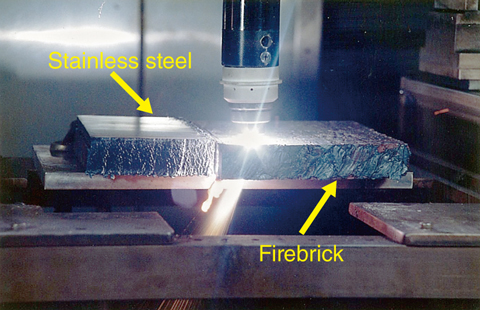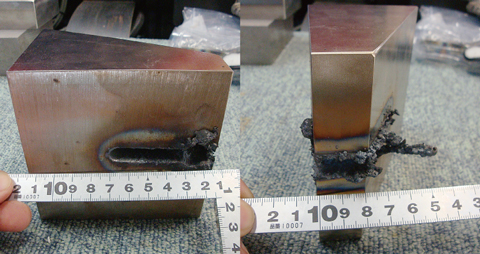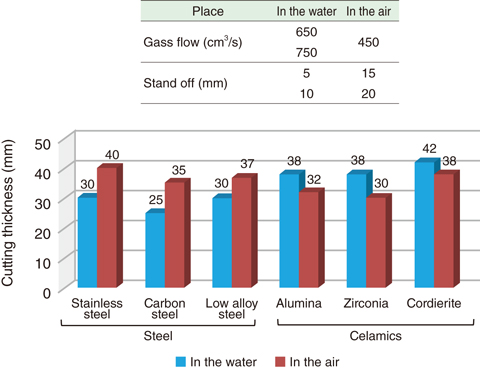
Fig.1-9 Metal- and nonmetal-cutting with a plasma jet

Fig.1-10 Stainless steel after cutting

Fig.1-11 Cutting Ability of the plasma jet
The TEPCO’s Fukushima Daiichi NPS (1F) lost its core-cooling function during the Great East Japan Earthquake of 2011, leading to core meltdown. Removing the molten fuels and core internal materials for the decommissioning of 1F is necessary; however, it is assumed that the original shapes of the core’s internal materials were not retained and the interior of the reactor is a very narrow space. Choosing cutting technologies appropriate to this situation is necessary for safe and certain decommissioning.
Plasma-jet cutting technology (max output current: 250 A) is being developed for the dismantling of nuclear facilities at the Oarai Research and Development Center. The plasma jet was developed to cut steel materials and concrete. It can be applied to not only metal but also conductive nonmetal. It can also crush firebricks by thermal shock (Fig.1-9). Plasma-jet cutting technology is applicable for removal of the debris. A plasma-jet torch (max output current: 600 A) was produced for this application. This torch is available for the cutting of thick core-internal materials in water. Its ability to cut debris and core internal material has been confirmed.
This technology is capable of cutting for more than 30 min underwater with use of the torch (tip diameter: 5.0 mm; restriction ratio: 3.0; output current: 600 A). It can cut steel materials 40-mm thick in air and 30-mm thick underwater, cut ceramics 38-mm thick in air and 42-mm thick underwater (Figs.1-10 and 1-11), and crush ceramics 50-mm thick underwater.
In future, we will conduct a cutting examination and a performance evaluation to confirm the jet’s applicability to 1F. We will also undertake an examination of the fuel-debris-takeoff system, which combines the cutting tool with remote-control technology. These results will be used to determine decommissioning measures for 1F.